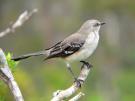 Notes on Close Reading: Notes on Close Reading:Be an active reader and mark up your book as you read. Use highlighters and pens to underline and make notations. A closely-read story is surrounded by comments in the margins, exclamation marks, question marks, underlining, stars, etc. These marks and comments help you to easily find significant passages in the text that are descriptive, explanatory, informative, moving, or puzzling. Mark words or passages you don't understand. Circle, underline, or highlight unfamiliar words. Mark longer passages by bracketing them and putting a question mark in the margin. Words or passages that confuse you are good for class discussion later on. Underline items you think are important. If you find sentences or passages that you think give a message (theme), advance the action or story in a new way, foreshadow suggest a future event, or tell something meaningful about a character, be sure to underline, bracket, or star them. Write key words in the margin to help you remember where an important idea or event occurs. For example, when a new character is introduced, underline the words and phrases which describe this character and then write the character's name in the margin. When aspects of setting are mentioned (a different time or place), underline them and make some notation in the margin. If certain words or ideas seem to be repeated in the text, note them also; they may be connected to motif (a main theme) or subject . Note your feelings. In the margin, note with exclamation points or comments any feelings you have - positive or negative. This way you can track your feelings about a particular character or turn of events. Especially note passages that evoke anger, confusion, sadness, disappointment, surprise, happiness, respect, awe or wonder. |
Prepared for ESL 91L at San Jose City College
Powered by LanguageTeach Software.
Copyright © 2005. All Rights Reserved.
